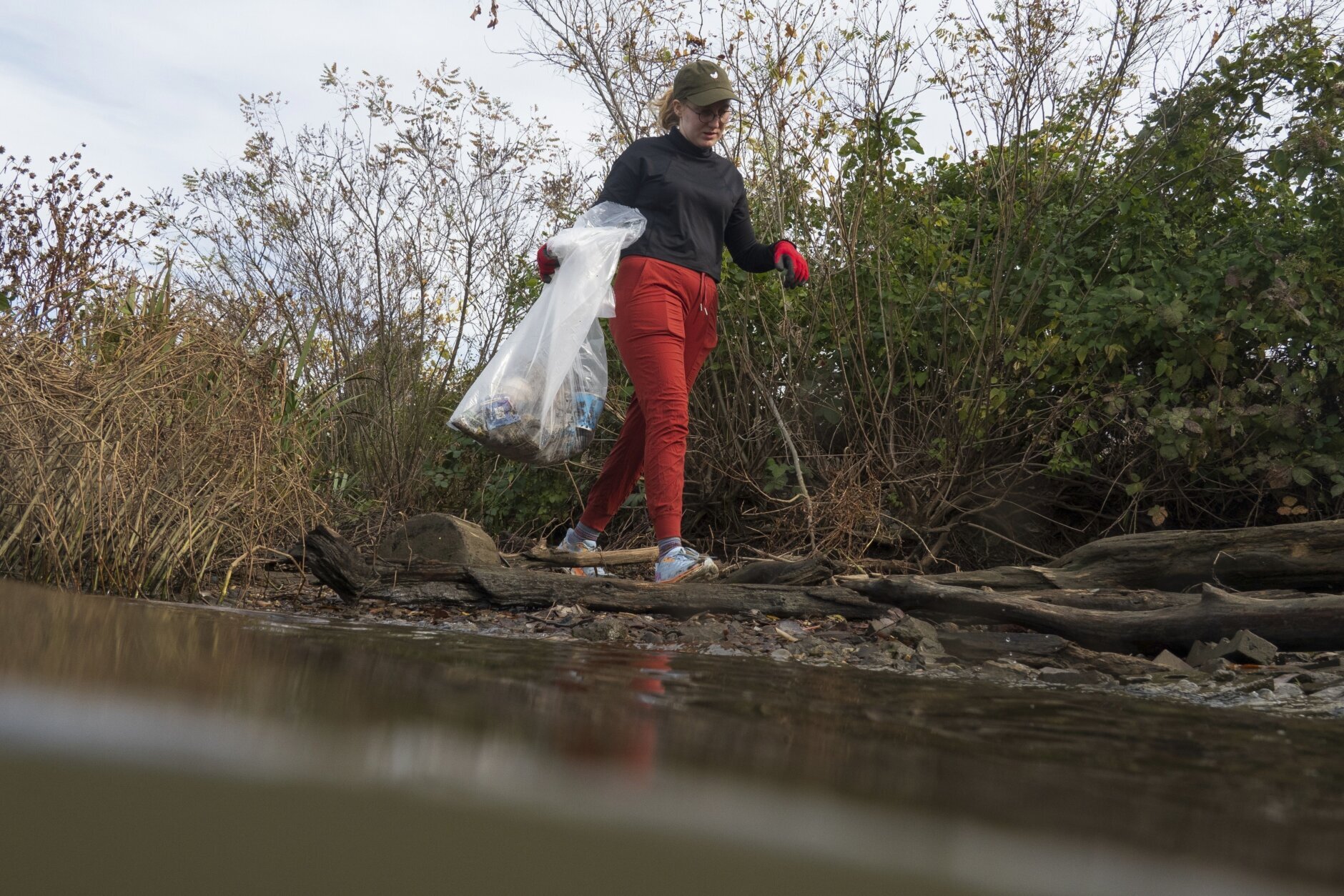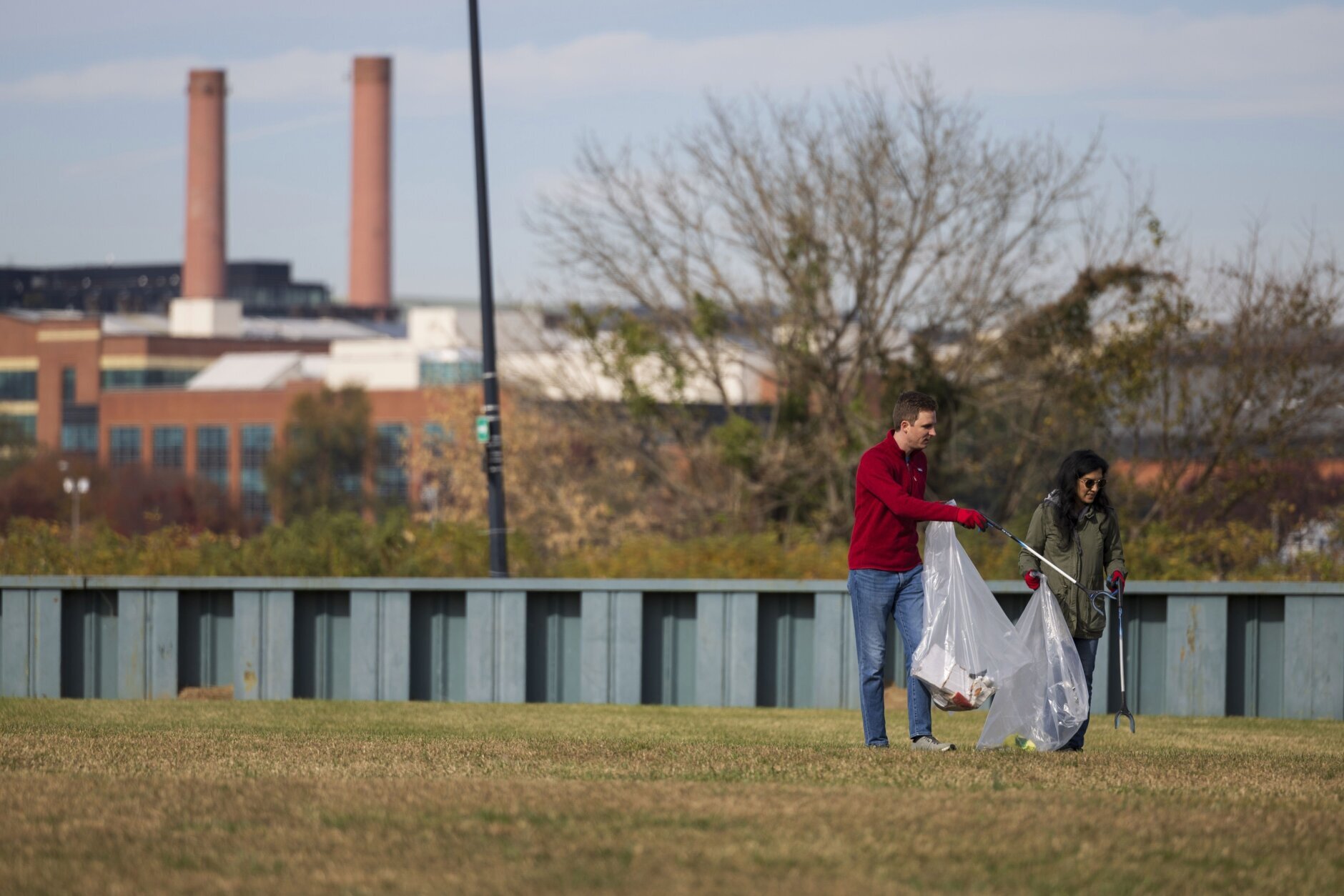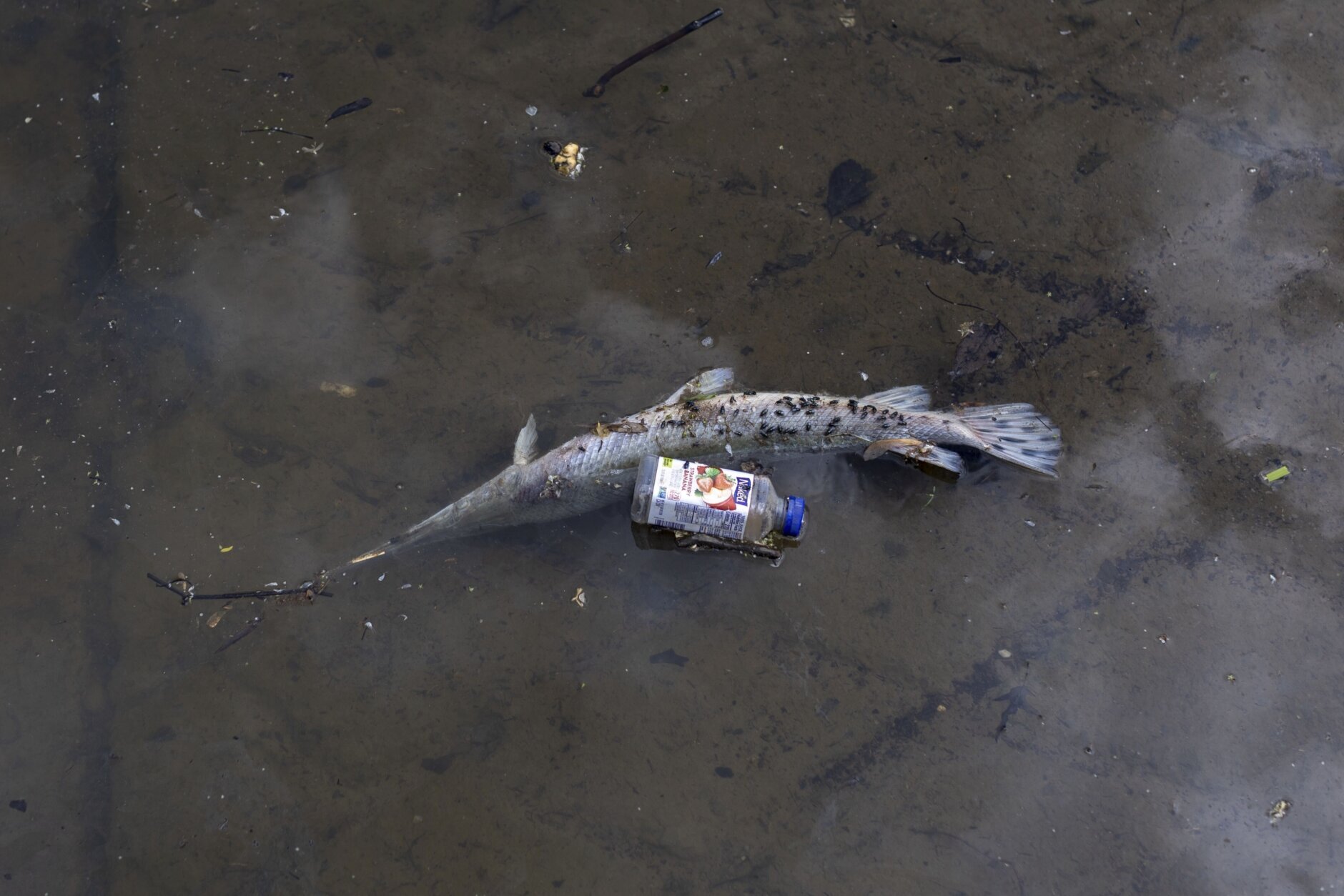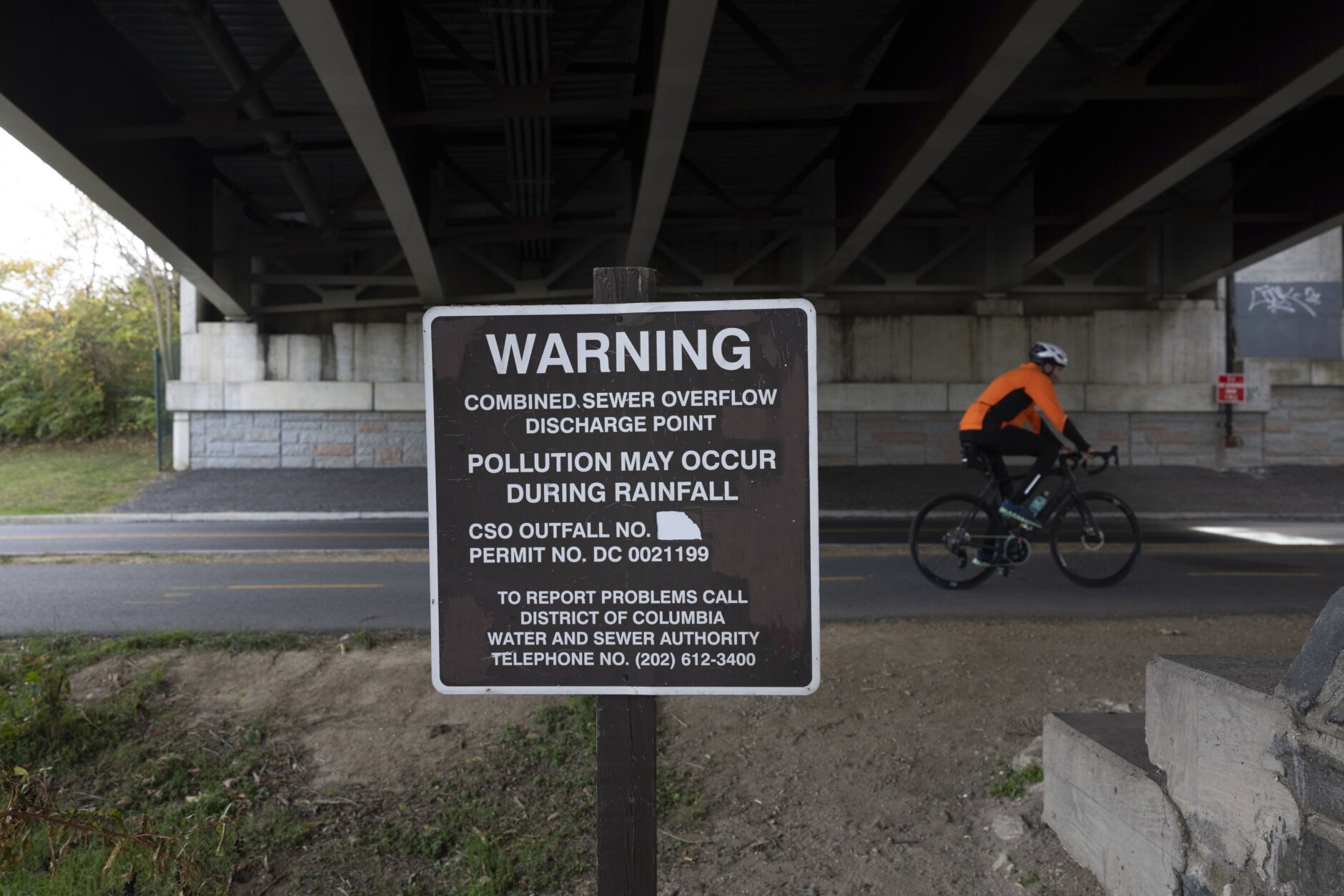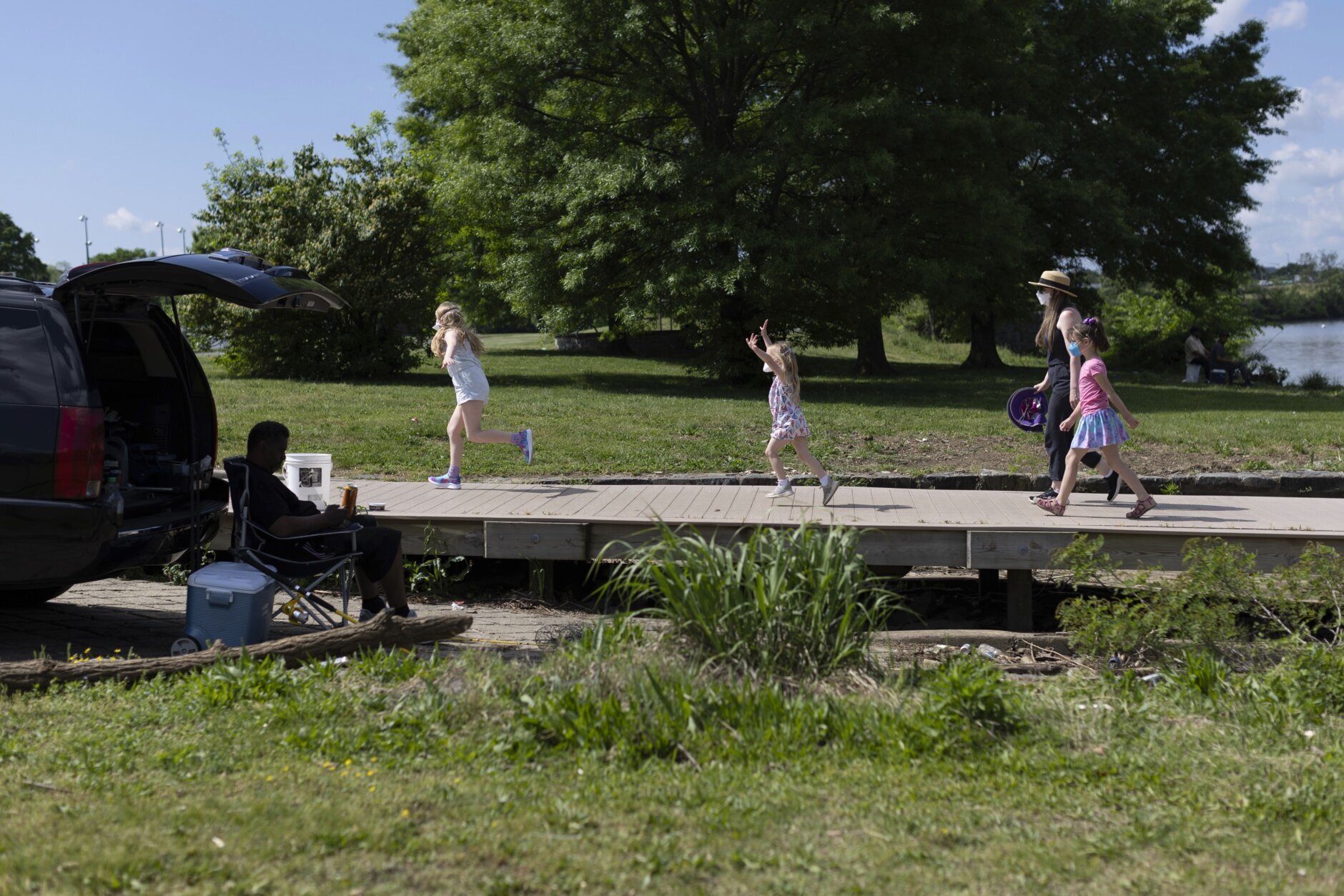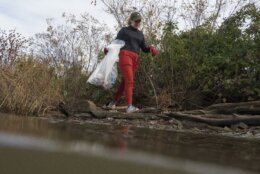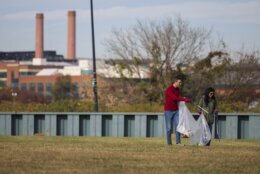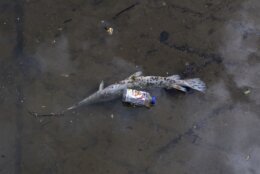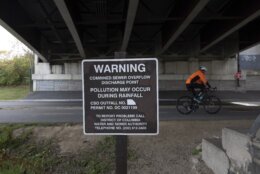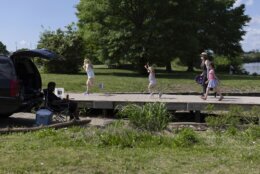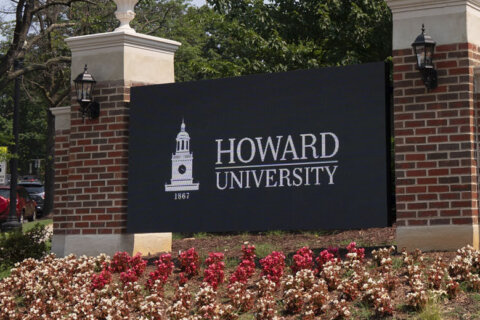WASHINGTON (AP) — Bruce Holmes, 65, grew up fishing on the Anacostia River, a 9-mile (14-kilometer) urban waterway that flows through Washington, D.C. and parts of Maryland, and has long been defined by pollution and neglect.
Back then, Holmes would keep what he caught with his family — usually carp or catfish — and take it home to fry. It was the 1970’s, and he didn’t know how contaminated the water was.
“There wasn’t no throwing it back in,” Holmes said, “Whatever we caught we ate. Or we sold.”
Now, decades later, Holmes no longer eats what he catches from the Anacostia as he’s learned more about the river, but teaches adults and children in the capital how to fish as the river undergoes something of a comeback. He hopes the fishing lessons double as a clarion call to help clean up and maintain the river he grew up around.
Sometimes called D.C.’s “forgotten river,” the Anacostia River is shorter, shallower and harder to navigate than the more famous Potomac, which cuts through the city’s storied landmarks and is steeped in Revolutionary and American Civil War history. For decades, the Anacostia was treated as a municipal dumping ground for industrial waste, storm sewers and trash. That contamination largely affected the communities of color that the river intersects.
In recent years, things have started to improve, but change has come slowly.
INFRASTRUCTURE UPGRADES
It’s still illegal to swim in the Anacostia because of E. coli levels that test above the threshold deemed safe for human exposure, but in recent years, a $3.29 billion sewer upgrade in D.C. has reduced sewage overflows into the river, keeping large amounts of waste out.
A series of tunnels drilled under the city capture storm and sewage water that previously flowed into the Anacostia. Since 2018, when the first segment went online, the upgrades have reduced outflows of sewage and wastewater by 91%, according to DC Water, the city’s water utility.
Last fall, the final section of the Anacostia Tunnel System went online. The overall system is expected to reduce overflows into the river by 98%.
Still, the Anacostia received a failing grade for the third time in six years last year from a nonprofit that grades the river’s health based on its fecal bacteria content and the state of its aquatic vegetation.
The Anacostia Watershed Society tested the river for fecal bacteria, dissolved oxygen — needed by all aquatic animals — and algae levels, as well as the health of its aquatic vegetation and clarity of its water.
“The trend line is moving up,” said Chris Williams, director of the Anacostia Watershed Society. “Twenty-five years ago, it was one of the most polluted rivers in the country,” he said, contrasting that to the past few years “where the water quality is pretty steadily improving.”
ENVIRONMENTAL JUSTICE
For many involved in the Anacostia’s clean-up, the history of the river, its neglect and industrial pollution are inextricable from the city’s racial history.
The river and the surrounding 1,200-acre (4.85-square kilometer) Anacostia River Park that reaches into parts of Maryland across the D.C. boundary were where communities of color swam, fished and recreated.
“Because there are low-income communities around the river, it can seem like they’re responsible for the pollution,” said Akiima Price, executive director of Friends of Anacostia Park, an organization that works in the communities surrounding the river.
“But it comes from everywhere, all over the watershed,” she said.
That was acknowledged last year when Pepco, the city’s utility, reached an agreement with the District of Columbia to pay more than $57 million for discharging hazardous chemicals from their power plants into soil, groundwater and storm sewers for decades that polluted the Anacostia and other areas. The settlement was believed to be the largest in the utility’s history.
The payments will be used in part to clean up the river, including addressing contamination from its former power plants. Other measures the city government instituted like a fee on plastic bags since 2009 have also helped keep trash out, experts say.
To Price, the work is ongoing. “There are still challenges,” she said, “but people feel more connected to the river.”
MAKING IT SWIMMABLE
To help change long-held perceptions that the water is still as polluted as it once was, Anacostia Riverkeeper, another environmental nonprofit, has organized a swim event along a small stretch of the river designated safe for swimming.
This year’s event will take place at the end of June near Kingman Island, a patch of land in the middle of the river. If the event goes as planned, it would mark the first time in more than a half-century that D.C. residents could legally swim in the river, after the city prohibited doing so in any of its waterways in 1971. Last year, the same event was canceled after a storm raised bacteria levels in the river because of sewage overflows.
“It’s not lost on me that we’re overturning over 50 years of discourse about the river,” said Quinn Molner, operations director at Anacostia Riverkeeper. Around 200 people are expected to participate in the swim, Molner said, despite the skepticism her organization encountered when they first announced the event. “A lot of people that have lived in this area for a long time knew this river when it was not so great.”
Holmes is one of them. A lifelong resident of Southeast D.C., still a predominantly Black and less affluent part of the city, Holmes said he’s doubtful that in just a few years, the river in its entirety will be swimmable and fishable.
“That’s a little bit of a stretch,” he said, “but I can actually say, because I’ve been fishing out here for years, I’ve seen some big changes.”
___
This story has been updated to correct the name of a nonprofit that seeks to protect and restore the river to the Anacostia Watershed Society, not the Anacostia River Watershed.
___
The Associated Press receives support from the Walton Family Foundation for coverage of water and environmental policy. The AP is solely responsible for all content. For all of AP’s environmental coverage, visit https://apnews.com/hub/climate-and-environment
Copyright © 2025 The Associated Press. All rights reserved. This material may not be published, broadcast, written or redistributed.

